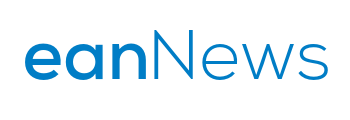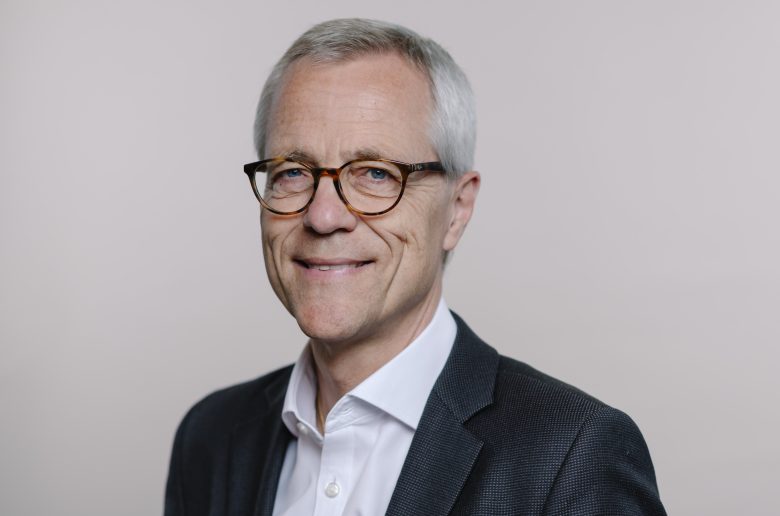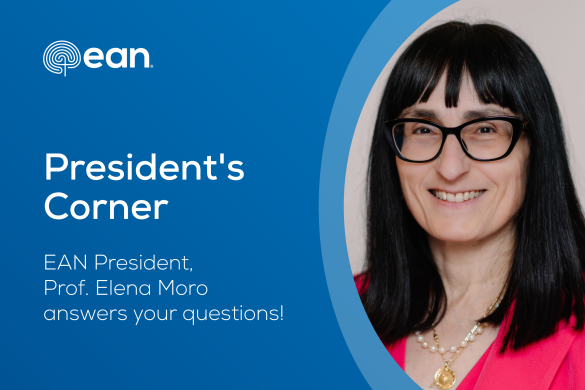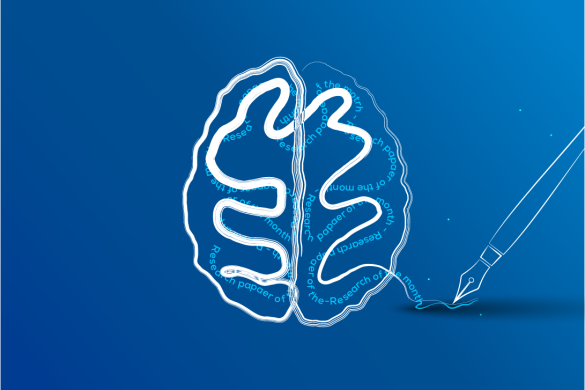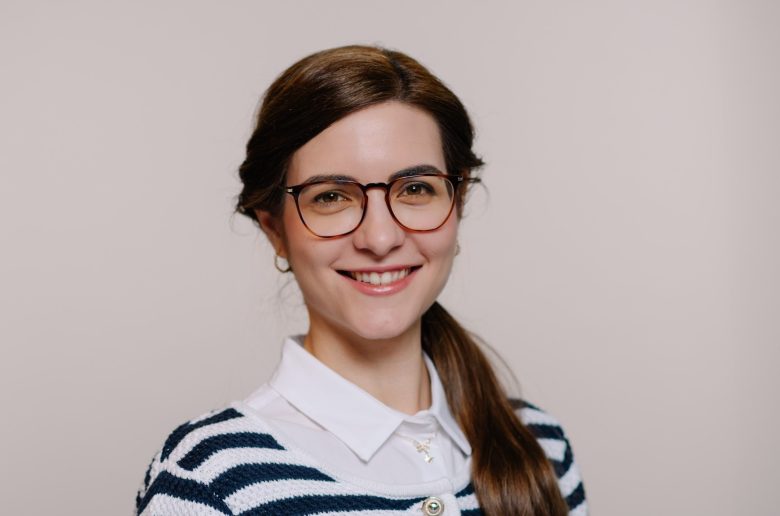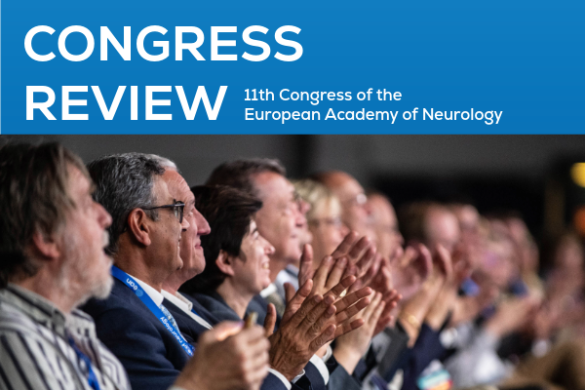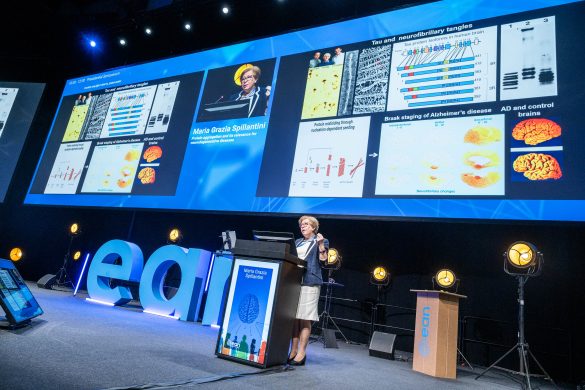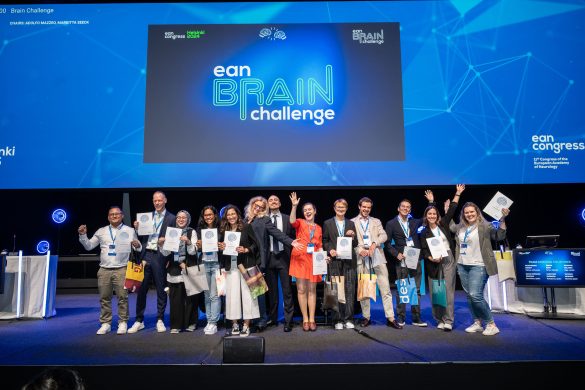Some of the lessons learned from CADASIL show that:
- Patients should not be forced into known categories when the condition is not clear
- A descriptive acronym is better than multiple wordings
- Family history and examination of family members is important
- Once recognised a rare disorder rapidly becomes not so rare
- Clinical observations can stimulate basic research
- A monogenic condition can be a good model and elucidate polygenic disorders
Get a glimpse of the key highlights, insights, and standout moments from EAN 2025 in Helsinki, all captured in our Congress Review eBook.
Latest Posts
-
-
 Nominations are open again for The Grete Lundbeck European Brain Research Prize 2013 (http://www.thebrainprize.org/). The Brain Prize is awarded to one or more scientists who have distinguished themselves by an outstanding contribution to European neuroscience.
The Prize recognizes a highly… Continue Reading
Nominations are open again for The Grete Lundbeck European Brain Research Prize 2013 (http://www.thebrainprize.org/). The Brain Prize is awarded to one or more scientists who have distinguished themselves by an outstanding contribution to European neuroscience.
The Prize recognizes a highly… Continue Reading -
Other News
Junior neurologists at 16th Congress of EFNS in Stockholm, 8-11 September 2012
August 1, 2012 The European Association of Young Neurologists and Trainees (EAYNT) is the independent representative of junior European neurologist. EAYNT was founded in 1999 in Brussles, has almost 800 members.
Our major aim is to advocate young neurologists interests in major European… Continue Reading
The European Association of Young Neurologists and Trainees (EAYNT) is the independent representative of junior European neurologist. EAYNT was founded in 1999 in Brussles, has almost 800 members.
Our major aim is to advocate young neurologists interests in major European… Continue Reading -
Top 10 Articles
Top Article: PML-IRIS in patients with HIV infection. Clinical manifestations and treatment with steroids
July 1, 2012Abstract Background: Progressive multifocal leukoencephalopathy (PML) is an opportunistic infection that develops in immunosuppressed patients with HIV infection. Paradoxically, some of these patients may develop PML during combined antiretroviral therapy in the setting of immune reconstitution. We describe the types… Continue Reading -
Johann Sellner, Past-President of the EAYNT (European Association of Young Neurologists and Trainees)
-
Grand Rounds
Case Report: Meningoencephalomieloradiculoganglionitis causing death of a 40-year-old patient
July 1, 2012presented by Dominika Novak, Viktor Švigelj and Mara Popović Clinical course: This forty-year-old electrotechnician was admitted to our hospital because of progressive difficulties in swallowing and walking. He reported being in relatively good health* till approximately June, 2009. There was… Continue Reading -
Swedish pioneers in Clinical Neuroscience – focusing on neuromuscular diseases by Lars Edström In the middle of the 19th Century the knowledge of Neurology among Swedish universities were represented by academic representatives from general Internal Medicine.
Of historic interest is… Continue Reading -
The neurological examination has grown with our profession over the past 150 years. Neither the examination as a whole nor its individual parts have been subjected to the sort of rigorous evaluation which would command an instant Level A recommendation from an EFNS guideline panel. Nevertheless as a Good Practice Point the examination commands the leading position in the list of neurological investigations. Last year Johnston and Hauser, editors of the Annals of Neurology (volume 70, A10), called for research into the value of the different aspects of the “ethereal” neurological examination. The call was hotly debated in subsequent correspondence as being either overdue on the one hand or unnecessary and inappropriate on the other.
-
Like in the previous years the interest for attendance in our course was overwhelming. With sad heart we were forced to refuse applications of 90 colleagues. Out of those 136 accepted the majority have overcome various administrative obstacles (visas, permissions, insurance etc.) and after some cancellations 123 participants have come from 36 countries.
-
he Nobel Museum is a museum devoted to circulate information on the Nobel Prize, Nobel laureates from 1901 to present, and the life of the founder of the prize, Alfred Nobel (1833-1896). The museum is, together with the Swedish Academy and the Nobel Library, located in the former Stock Exchange Building (Börshuset) taking up the north side of the square Stortorget in Gamla stan, the old town in central Stockholm.
-
by Marianne de Visser The EMA is pleased to announce the launch of the new European database of suspected adverse drug reaction reports website at http://www.adrreports.eu/.
The launch of the website is a positive first step in the implementation of… Continue Reading -
 by Peter J Goadsby
A Core Curriculum, for use by medical schools and residency programmes, was originally identified as an educational goal by the International Headache Society Strategic Planning group. In 2009 the IHS Education committee initiated the Core Curriculum… Continue Reading
by Peter J Goadsby
A Core Curriculum, for use by medical schools and residency programmes, was originally identified as an educational goal by the International Headache Society Strategic Planning group. In 2009 the IHS Education committee initiated the Core Curriculum… Continue Reading -
Top 10 Articles
Top Article: Cognitive impairment in incident, untreated Parkinson’s disease. The Norwegian ParkWest Study
June 1, 2012Abstract Background: Little is known regarding the cognitive impairment in subjects with early, drug-naive Parkinson disease (PD). The aim of this study was to explore the proportion with mild cognitive impairment (MCI) and subtypes in an incidence cohort of untreated… Continue Reading -
Michael Brainin, Chair of the EFNS Scientific Committee
-
Grand Rounds
Case report: A young woman with subacute onset of right hand numbness, diplopia and light headache
June 1, 2012by Sandro Marini We describe the case of a Caucasian 18-year-old woman self referred to the emergency department because of numbness in her right hand and dyplopia. Approximately one week earlier, the patient gradually began to feel as if her… Continue Reading
